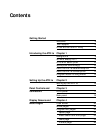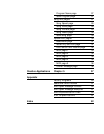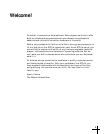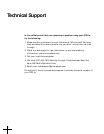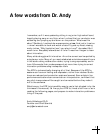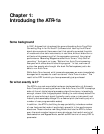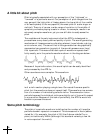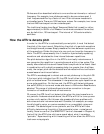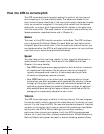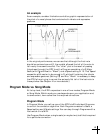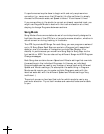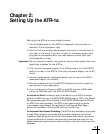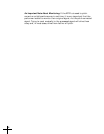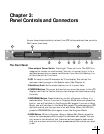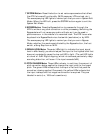
11
Pitches are often described relative to one another as intervals, or ratios of
frequency. For example, two pitches are said to be one octave apart if
their frequencies differ by a factor of two. Pitch ratios are measured in
units called cents. There are 1200 cents per octave. For example, two tones
that are 2400 cents apart are two octaves apart.
The traditional twelve-tone Equal Tempered Scale that is used (or rather
approximated) in 99.9% of all Western tonal music consists of tones that
are, by definition, 100 cents apart. This interval of 100 cents is called a
semitone.
How the ATR-1a detects pitch
In order for the ATR-1a to automatically correct pitch, it must first detect
the pitch of the input sound. Calculating the pitch of a periodic waveform
is a straighforward process. Simply measure the time between repetitions
of the waveform. Divide this time into one, and you have the frequency in
Hertz. The ATR-1a does exactly this: It looks for a periodically repeating
waveform and calculates the time interval between repetitions.
The pitch detection algorithm in the ATR-1a is virtually instantaneous. It
can recognize the repetition in a periodic sound within a few cycles. This
usually occurs before the sound has sufficient amplitude to be heard. Used
in combination with a slight processing delay (no greater than 4 millisec-
onds), the output pitch can be detected and corrected without artifacts in
a seamless and continuous fashion.
The ATR-1a was designed to detect and correct pitches up to the pitch C6.
If the input pitch is higher than C6, the ATR-1a will often interpret the
pitch an octave lower. This is because it interprets a two cycle repetition as
a one cycle repetition. On the low end, the ATR-1a will detect pitches as
low as A0 (55Hz) in its normal mode and down to 25Hz when Bass Mode is
selected. This range of pitches allows intonation correction to be per-
formed on all vocals and almost all instruments.
Of course, the ATR-1a will not detect pitch when the input waveform is
not periodic. As demonstrated above, the ATR-1a will fail to tune up even
a unison violin section. But this can also occasionally be a problem with
solo voice and solo instruments as well. Consider, for example, an excep-
tionally breathy voice, or a voice recorded in an unavoidably noisy envi-
ronment. The added signal is non-periodic, and the ATR-1a will have
difficulty determining the pitch of the composite (voice + noise) sound.
Luckily, there is a control (the SENSITIVITY control, discussed in Chapter 4)
that will let the ATR-1a be a bit more casual about what it considers
“periodic.” Experimenting with this setting will often allow the ATR-1a to
track even noisy signals.



